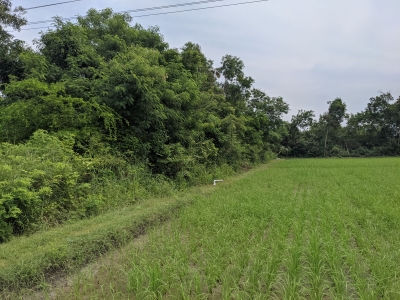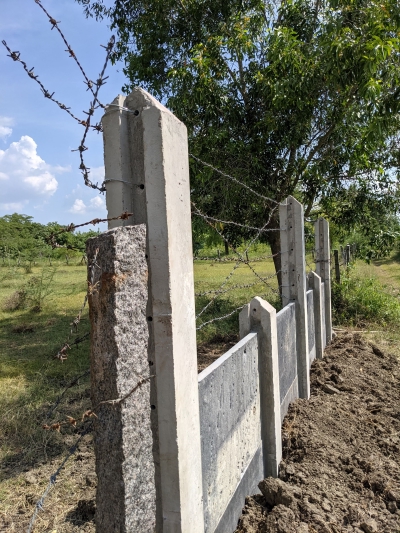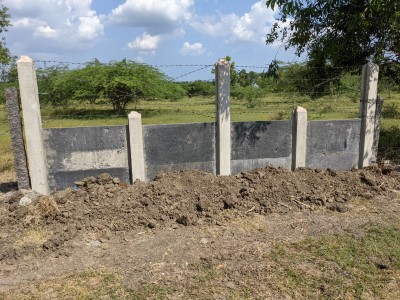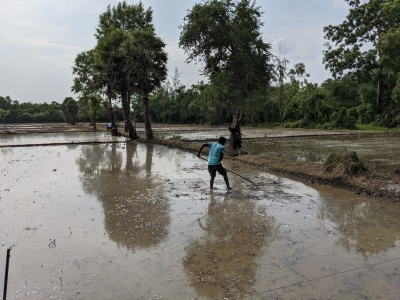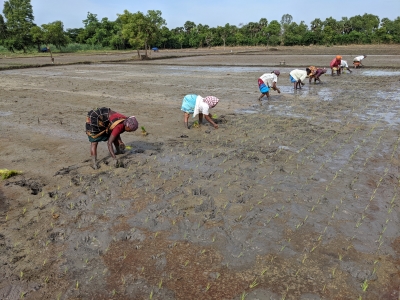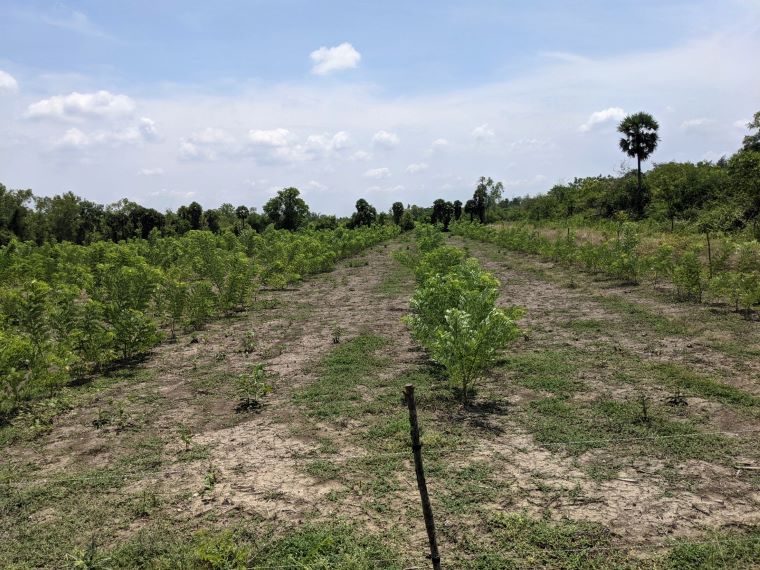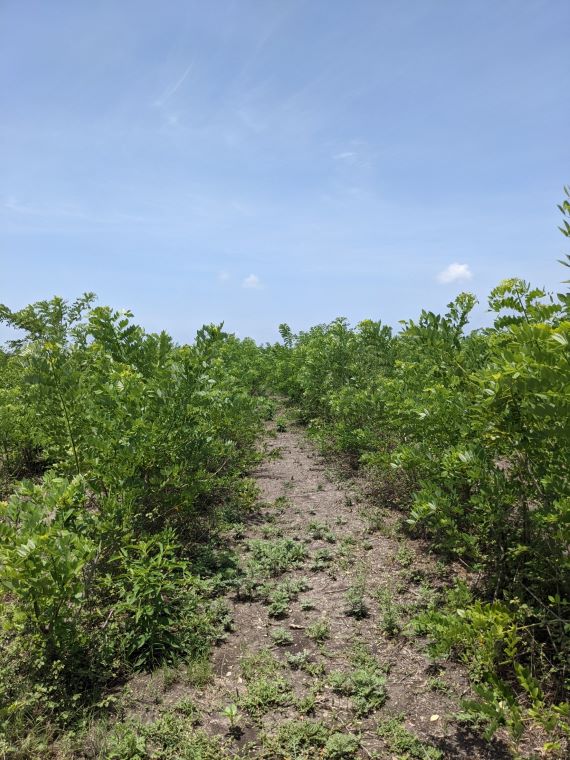This week blog, I want to share a reaction from one of our supporters about the “Annapurna Support Fund”. Toine is a Senior Aurovilian involved on governing level and working with Auroville Consulting.
Dear Annapurna Team,
Congrats with the Annapurna website. Finally, a site that you (hopefully) need not have to fence!
I read the following about the Annapurna Support Fund:
“The Annapurna Support Fund is a fund where the interest accrued from the fund will go to meet certain initiatives of Annapurna that are deemed as being necessary for the community or vital for farm development. Our target is to raise at least Rs. 30 lakhs, which will then be invested by the Financial Service in a secure interest-earning bond. Rs. 30 lakhs can earn an interest of about Rs. 20,000/month, which will be allocated towards specified farm expenditure. Only actual expenses of the farm as deemed necessary by the managers of the Support Fund will be met.
One example, actually an immediate need is fencing of the entire farm area to protect it from the fast-increasing wild pigs and deer. A pucca fence will also stop stray cattle damaging crops and encroachment of the land”.
Instead of investing the INR 30 lakhs (or more) in a financial instrument (deposit, bond) what would happen if this money is invested directly in Annapurna Farm?
The “return” would then be: (a) an environmental / social impact return (since organic food replaces non-organic food from the market); (b) a long-term financial return which would be the difference between the net present value of the cost of future market purchases and the cost of producing food at the farm.
If the return on the financial instrument is INR 2.40 lakhs per annum as stated above (INR 20,000 per month), the annual return would be 8% (which seems high when compared with present (2021) bond rates). If we can get a similar long-term return from the direct investment, we create an inflation-compensation mechanism as well.
I understand that some institutions have no option but to park their surpluses in financial instruments since they have no activity of their own to invest in. But in the case of Auroville we can invest in farming assets and renewable energy assets to produce outputs that Auroville would otherwise buy from the market / TNEB.
Investment in an interest-earning bond may be “secure” but in the long term these instruments do not even beat inflation, leaving a net-negative return while the money is used by the bond issuer to fund outside projects rather this money going to Auroville’s own growth towards a self-supporting township.
If (a part of) the Support Fund comprises (interest-free) loans, which need to be repaid, such repayments can be financed from the farm produce or from donations / grants if they come about. But you get started with investing in the farm immediately rather than doing this at a slow pace with the interest income.
Please share your thoughts on this.
Best regards,
Toine
***************************************************************
Dear Toine
Thanks for sharing your thoughts on this.
I fully sympathize with the idea that this way of investing is not really how we should deal with money.
At the time of creating the fund we were aware of this as well.
Still there were compelling reasons to go ahead.
Firstly, a good part of the corpus is money parked by individuals who need it back at often rather short notice.
After investing the money in one way or the other in the farm it might not be available very fast.
Annapurna is not a common input-output farm; economics are not on top of our agenda. For us other factors like ecology, quality, aesthetics are very important.
All over the world farming has been developed with economic returns as their main objective and in the process agriculture has become one of the most destructive forces on the planet.
In this respect it is interesting to look at what is happening to Dutch agriculture right now. At last they have realized that there is more to agriculture than monetary profit. Now i am very curious how they are going to redirect this sector.
Putting money into water harvesting, caring for old animals, planting trees where crops could grow etc is not directly giving us economic returns but we are convinced that these values resonate very much with our reason to be here, and in the long run will pay of.
This does not mean we are not looking at economics. I am very much keeping that in the picture. It is one way of measuring what happens on the ground and keeps us grounded in the world. We just do not make it our main decision making criterion whenever possible.
Our vision of Annapurna is to produce healthy and sustainable food for the community. We try to do this in an efficient and positive way.
Generally food is reduced to an economical commodity. We think that’s not the kind of food we want to produce in Auroville.
Coming back to the corpus, we are aware that the interest which is generated is probably not done in a very ethical way and so we are not totally happy with that aspect of it.
Better would be that the money would be invested into a finance generating Auroville unit and invest profit back into farms maybe.
What was important at the time of creation of the fund was the fact that we needed an assured small capital income every year to make the most needed improvements in the farm.
Having a regular income for investments is very important. Donations and grants are wonderful but their irregularity makes them less effective while planning development of the farm.
We also hoped the dynamic of investments would set more inflow of donations in motion which has surely been happening since then.
As you will read in our upcoming newsletter you will see quite an array of projects in the pipeline right now financed by individuals, like yourself, who have confidence and are inspired in what is happening on the ground.
Personally i am in favor of going slow and step by step.
It is hard to oversee the consequences of big projects and often lots of resources are wasted.
I have seen that once things are grounded and properly worked out the funds seem to materialize wonderfully.
This is really the magic of being in Auroville and being in that flow is important to me as an individual.
For me the how we go there is more important than arriving fast; I have seen if the how is done in the right way, the results will surely come.
Probably this writing did not satisfy you fully, but maybe gives you a bit of a inside how we look at this.
Thanks for being involved,
tomas
*************************************************************************
Dear Tomas,
Thank you for your detailed response.
I agree with you that food (like almost everything else) has been reduced to a commodity that is controlled by the forces of money and short-term gains. At the same time, money is needed to invest in farms (land, equipment, irrigation systems etc.), renewable energy systems, water (recycling) systems etc.
There are a good number of investors out there already who look at social impact return instead of (only) financial return. Often these investors are fine with a low (and even uncertain) financial return as long as there is tangible social impact. We need to go in that direction in Auroville as well. In fact, Auroville must be one of the leaders in this new economy.
Auroville has substantial financial reserves. Definitely a part of these reserves can be invested as social impact funding in sustainable agriculture (as well as energy and water). The point that I am making is that investing in the old economy and using the returns of those investments into the new economy is one way of doing it. But a more effective approach would be to put a part of the available funds / reserves directly into the new economy.
Even with investments that are primarily social impact-driven, there will be financial returns, since eventually there will be food production (in this example) with a certain monetary value for which there are already existing recurring expenditure budgets. While with agriculture the “lead time” to production may be long, in the case of renewable energy it is immediate (replacement of TNEB power, for which there is already a recurring expenditure budget, with self-generated renewable energy).
The last time we spoke you mentioned of the need of fencing with a budgetary cost of about INR 50 lakh. Even if you want to move step-by-step, getting this fencing done would be one such step!
Finally, there is the aspect of “opportunity cost”. An old-economy concept, but to be considered even more in the new economy. If there is about 100 acres of land that can be cultivated but is not cultivated mainly due a lack of fencing, equipment, irrigation systems and people, that is a very high opportunity cost!
Best regards, Toine







